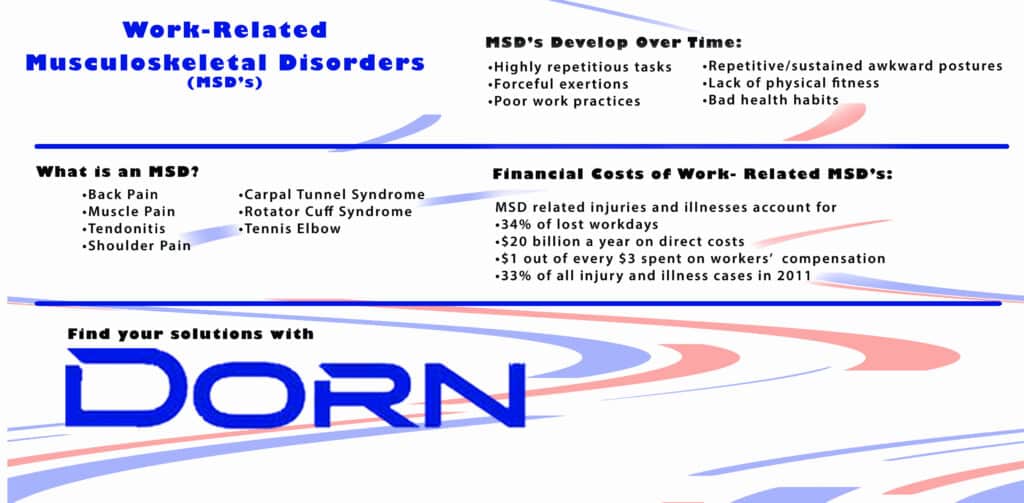Musculoskeletal disorders (MSDs) are one of the least understood and highest costing issues in the workplace for employers. Pain medications, diagnostic imaging, and surgical procedures are among the factors that drive up the cost of treatment for these disorders. These treatments also resulted in long recovery times, increased risk of depression, and increased risk of prescription pain medication abuse.
According to a study in the New England Journal of Medicine, the patients in the study showed no difference in pain a year after receiving some of these types of treatments. How do employers fix the problem of overspending and not seeing their employees’ conditions improve? Here are 5 ways employers can better understand and address musculoskeletal disorders.
1. Do your research - understand the details of your claims.
How many employees have filed claims with similar conditions? Understand which types of musculoskeletal problems are the most common in your employees. What are the costs of those claims? Find out how much you are spending and on what.
2. Identify risks in the workplace and which employees are at higher risk.
Employees whose jobs involve arm and hand movements that require holding, gripping, twisting, clenching, and reaching are at higher risk of developing an MSD. The repetitive nature of many jobs causes these everyday movements to be harmful. Fixed or constrained body positions, force concentrated on a small part of the body, or a work pace that doesn’t allow adequate recovery time between movements are also factors that increase the risk of an employee developing an MSD. Identify which employees have jobs that contain these factors, and assess what you can do to lower or eliminate the risk.
3. Take preventative measures.
Taking preventative measures is essential in lowering the risk of employees developing MSDs in the workplace. Here are some things you can do as an employer to prevent MSDs:
- Provide good tools that prevent muscle strain and decrease the force needed to complete tasks.
- Provide guidance on how to properly set up a work space that will lower the risk of musculoskeletal issues.
- Encourage physical activity.
- Provide ergonomic work stations in production and office environments.
- Offer onsite hands on deep tissue therapy to address discomfort early within the pain continuum.
4. Provide support to employees and family members to help them make informed treatment decisions.
Sometimes employees and their family members need help weighing the pros and cons of different treatments. Resources that provide expert advice will help them make informed decisions on which treatments they need, and will help them manage their conditions effectively.
5. Partner with high performance networks and providers.
Partnering with leading treatment providers that specialize in musculoskeletal problems can be beneficial to employees. As an employer, you might consider including this in your benefits programs in order to better align cost, quality, and outcomes.
Musculoskeletal disorders are a major healthcare cost driver and are a challenge to manage. It is important for employers to understand risks posed in different jobs at your company, as well as define what types of musculoskeletal problems your employees might have. Employers can then take action to help prevent them, provide employees with resources to navigate treatment options, manage pain, and return to work.



